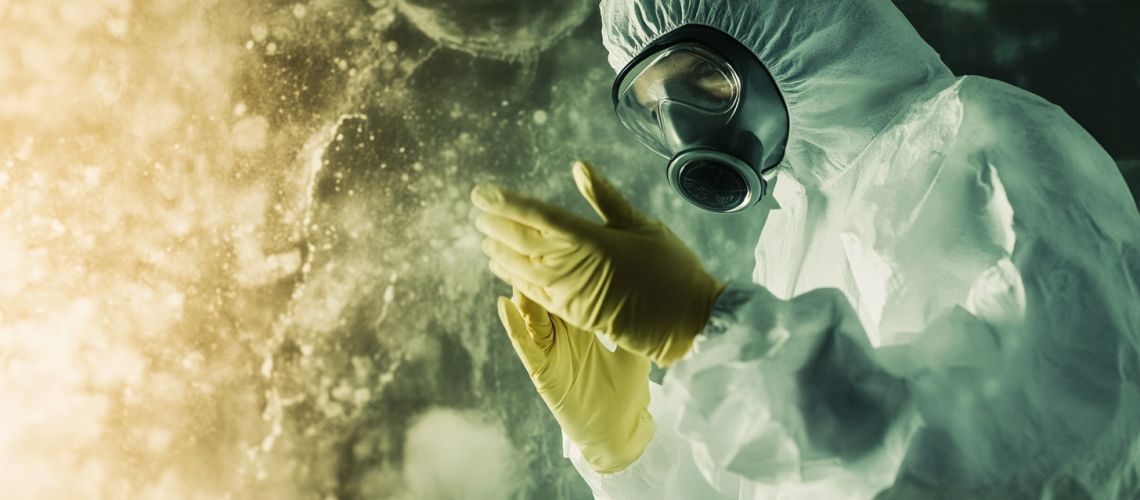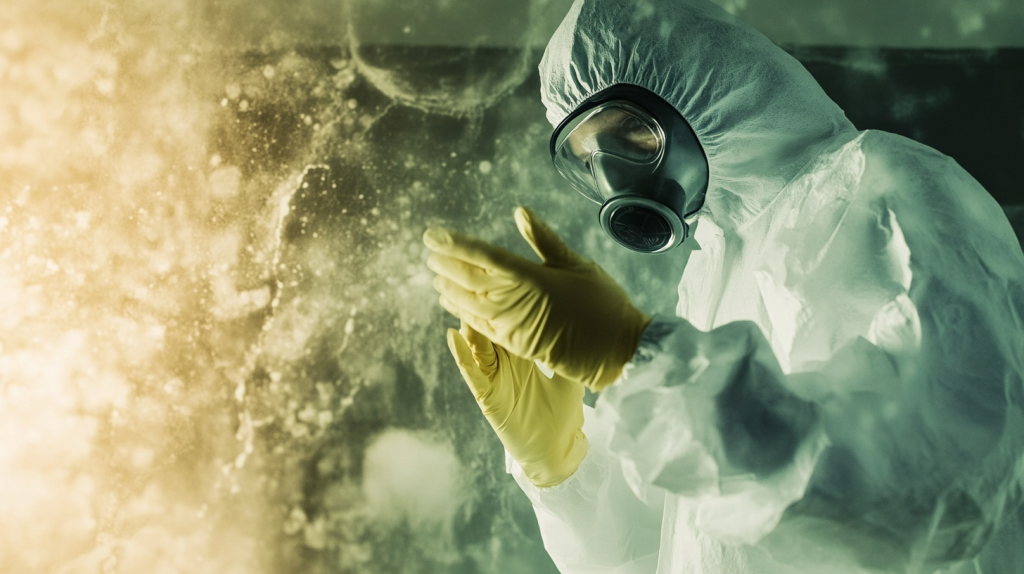Understanding Mold: What It Is and Why It Matters
Mold is a type of fungus that thrives in damp, humid environments. It plays a crucial role in the natural environment by breaking down dead organic matter such as fallen leaves and dead trees. However, when mold grows indoors, it can pose significant health risks and damage property if left unchecked.
The Nature of Mold
Mold reproduces through tiny spores that are invisible to the naked eye and travel through the air. These spores can land on various surfaces and, if conditions are favorable, begin to grow. Warmth, moisture, and food sources like wood, paper, or drywall provide an ideal environment for mold growth. It’s important to note that mold can be found both indoors and outdoors, but when it penetrates indoor environments, it often becomes a problem.
Health Implications of Mold Exposure
Exposure to mold can lead to various health issues, particularly affecting the respiratory system. Common symptoms associated with mold exposure include nasal stuffiness, throat irritation, coughing, wheezing, eye irritation, and skin irritation. People with mold allergies may have more severe reactions, and those with chronic lung illnesses or compromised immune systems might experience even more serious health problems.
Why Mold Contamination Should Not Be Ignored
Ignoring mold contamination can lead to structural damage as well as health concerns. Mold can gradually destroy the materials it grows on, causing structural weakening over time. Furthermore, areas affected by mold often require extensive repair, which can be costly. In workplaces, mold can also impact productivity and employee health, leading to increased absenteeism. Therefore, prompt identification and remediation of mold are essential to maintaining a healthy and safe environment.
Common Signs of Mold Growth in Your Environment
Discovering mold in your home or workplace can be concerning, especially given its potential health risks and damage to property. Being aware of the signs of mold growth is essential for early detection and remediation.
### Visual Indicators
One of the most straightforward signs of mold growth is visible mold spores. These can appear in various colors, including black, green, white, or even orange. Mold often grows in damp areas such as bathrooms, basements, or under sinks. Keep an eye out for small patches or spots that continue to grow over time. Sometimes, mold may appear as fuzzy or slimy textures on walls, ceilings, or furniture. If you notice any discoloration or unexpected staining, it might be a sign of mold colonization.
### Musty Odor
Mold emits a distinctive musty odor, often compared to damp earth or wet socks. If you detect a persistent unpleasant smell, particularly in certain areas like attics or closed-off rooms, it’s possible mold has developed there. Even if you cannot see mold growth, a strong musty scent should prompt further investigation, as mold could be hidden behind wallpaper, under carpets, or within drywall.
### Health Symptoms
Exposure to mold can cause a range of health symptoms, especially in individuals who are sensitive or allergic to mold spores. Common symptoms include sneezing, coughing, nasal congestion, itchy eyes, and skin irritation. More severe reactions can occur in people with asthma or compromised immune systems. If you or others in the environment experience these symptoms consistently and without other explanations, mold may be present. It’s crucial to consider health changes alongside other signs to accurately assess the likelihood of mold issues.
By recognizing these signs, property owners can take proactive steps to address mold problems before they escalate.
Identifying the Different Types of Mold
Common Indoor Molds
Molds are fungi that can be found both indoors and outdoors, thriving in damp and humid environments. Understanding the most prevalent indoor mold types can help in identifying them accurately. The most common varieties include Cladosporium, Penicillium, Aspergillus, and Stachybotrys, often known as black mold. Cladosporium appears as olive-green or brown patches and can grow on both wood and fabrics. Penicillium is characterized by its blue or green color and powdery texture, often seen on materials like wallpaper, carpet, and insulation. Aspergillus, a highly adaptable mold, can manifest in colors from white to black and is commonly found on food and air conditioning systems. Finally, Stachybotrys, typically presenting as dark greenish-black, is infamous for its association with water-damaged buildings.
Health Impacts of Mold Exposure
Exposure to different types of mold can lead to a variety of health concerns, which makes identification crucial for maintaining a safe environment. Some molds may cause allergic reactions such as sneezing, runny nose, skin rashes, and red eyes. More serious respiratory issues, like asthma attacks, can occur in people with pre-existing conditions or compromised immune systems. Black mold, in particular, has been speculated to produce mycotoxins that could contribute to neurological symptoms. It’s important to note that individual susceptibility varies; hence, precise identification can aid in determining the potential risks associated with specific mold types within your home or workplace.
Recognizing Mold Growth Indicators
Mold growth can often be detected through visual and olfactory clues even before extensive infestation occurs. Discolored patches, unusual staining, or fuzzy growths on walls, ceilings, or other surfaces are typical indicators of mold colonization. A musty or earthy odor is another telltale sign, often noticeable in areas like basements and bathrooms where moisture levels are higher. Additionally, unexplained chronic health symptoms among occupants, such as persistent coughs or headaches, might suggest hidden mold presence. Regular inspection and vigilance in moisture-prone areas can assist in early detection and effective management of mold proliferation.
Health Risks Associated with Mold Exposure
Exposure to mold, especially in indoor environments like homes or workplaces, can lead to various health issues. Mold spores are microscopic and can easily become airborne, leading to potential inhalation or required contact with the skin. Once in contact these spores can trigger a variety of health concerns.
Health Effects
Some individuals may experience allergic reactions when exposed to mold. These reactions can occur immediately or develop over time and may include symptoms such as sneezing, runny nose, red eyes, and skin rash. In more severe cases, those with pre-existing respiratory conditions, like asthma, may notice worsened symptoms, such as increased frequency and severity of asthma attacks. People with weakened immune systems or those who are sensitive to mold might also experience more intense reactions, including difficulty breathing and more persistent respiratory problems.
Potential Toxicity
Certain molds produce mycotoxins, toxic compounds that can cause serious health problems when inhaled, ingested, or touched. Stachybotrys chartarum, commonly known as “black mold,” is one such species known for producing mycotoxins. Exposure to these toxins can affect the central nervous system, leading to issues like headaches, dizziness, and cognitive difficulties. Extended exposure to toxic mold environments has been linked to chronic fatigue, nausea, and even damage to internal organs. Workers in certain industries, like agriculture or construction, should be particularly vigilant, as they may be more frequently exposed to these hazardous molds.
Long-Term Consequences
While short-term exposure to mold can result in immediate symptoms, prolonged exposure presents significant long-term health risks. Chronic respiratory issues can develop, including conditions like sinusitis and hypersensitivity pneumonitis. Some studies suggest that extended mold exposure may contribute to the development of other serious health conditions, such as autoimmune disorders. Ensuring that living and work environments remain free sudden illness related to moisture-related mold growth is fundamental to maintaining overall health and being.
Where to Look for Mold in Your Home or Workplace
Mold can be a silent intruder in both homes and workplaces, often going unnoticed until it becomes a significant problem. To effectively identify and address mold issues, it’s crucial to know where mold is likely to hide.
Common Mold-Prone Areas
Certain areas in your environment are more susceptible to mold growth due to the presence of moisture. Basements and crawl spaces are typical culprits, as they often have higher humidity levels and less ventilation. Bathrooms, especially those with poor ventilation, can experience mold in corners, on shower curtains, and around sinks and toilets. Kitchens also need careful attention, particularly under sinks and behind refrigerators where leaks might occur undetected.
Inspecting Less Obvious Spaces
While obvious spots like bathrooms and basements are well-known for mold growth, don’t ignore less visible areas. HVAC systems, including ducts and filters, can harbor mold if not regularly cleaned. Ceiling tiles and wall cavities are other areas that may silently harbor mold, often due to hidden leaks or condensation. Regular maintenance and inspection of these areas can prevent mold from becoming an unseen issue.
Checking Around Windows and Doors
Windows and doors are other critical areas to inspect. Mold can develop around windowsills, particularly if there is condensation from temperature differences between inside and outside. Leaky windows or doors can lead to moisture seeping into walls, providing an ideal breeding ground for mold. Routine checks and sealing any gaps can help mitigate this risk.
How to Conduct a Mold Inspection
Conducting a mold inspection is a crucial step in identifying the presence and extent of mold in your home or workplace. Understanding how to effectively inspect for mold can help you address any issues before they become larger problems.
Identifying Common Mold-Prone Areas
Start by inspecting areas of your home or workplace that are most susceptible to mold growth. These typically include places with high moisture levels such as bathrooms, kitchens, basements, and areas near plumbing fixtures. Look for visible signs of mold, which can appear as black, green, or white spots and may be fuzzy or slimy in texture. Pay special attention to corners, under sinks, around windows, and within HVAC systems where condensation may accumulate.
Using Your Senses During a Visual Examination
While a visual check is important, make use of your other senses during an inspection. A persistent musty smell is often a telltale sign of mold, even if it is not immediately visible. Listen for any dripping or leaking sounds that could indicate water intrusion, which might lead to mold growth. If you find any suspicious odors or sounds of water leaks, investigate further to locate the source, as mold often hides behind walls or beneath surfaces.
Employing Testing Tools for Precision
For a more thorough assessment, consider employing testing tools to detect hidden mold. Moisture meters can help you measure the moisture content in building materials, which should not exceed safe levels. Higher readings suggest that conditions are ripe for mold growth. Additionally, infrared cameras can spot temperature differences that might indicate moisture behind walls or under floors. If you suspect extensive mold but cannot pinpoint the exact location, these tools can be invaluable in uncovering hidden mold colonies.
When to Call a Professional for Mold Assessment
Mold growth is a common issue in both residential and commercial properties. While some cases can be managed with DIY solutions, there are situations where professional help is necessary to ensure the safety and health of building occupants.
Recognizing Extensive Mold Growth
If mold covers an area larger than 10 square feet, it’s time to call in a professional. Large infestations require specialized equipment and expertise to effectively assess and remediate. Professionals have the skills to identify all affected areas, even those hidden behind walls or under flooring, ensuring comprehensive removal.
Frequent Allergies and Health Symptoms
Persistent health symptoms among occupants, such as respiratory issues, headaches, or allergic reactions, may indicate significant mold exposure. When these issues persist despite cleaning efforts, a professional assessment can pinpoint hidden mold sources. Mold specialists use advanced testing methods to measure air quality and identify specific mold strains that may be affecting health.
Unexplained Musty Odors
A persistent musty odor is a telltale sign that mold might be present in your home or workplace, possibly in places not easily visible. Professional mold inspectors have the tools and experience to explore and evaluate less accessible areas, like HVAC systems or underneath carpets, where mold could be lurking undetected.


